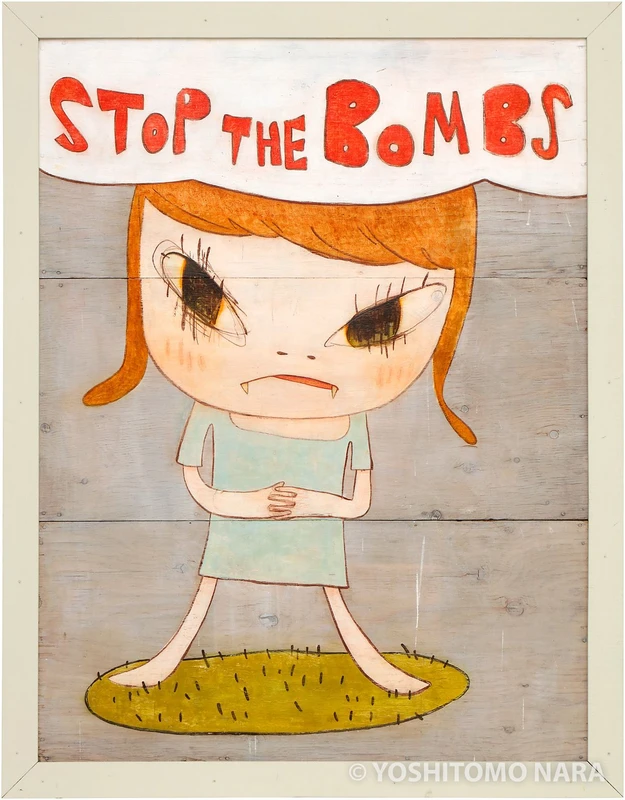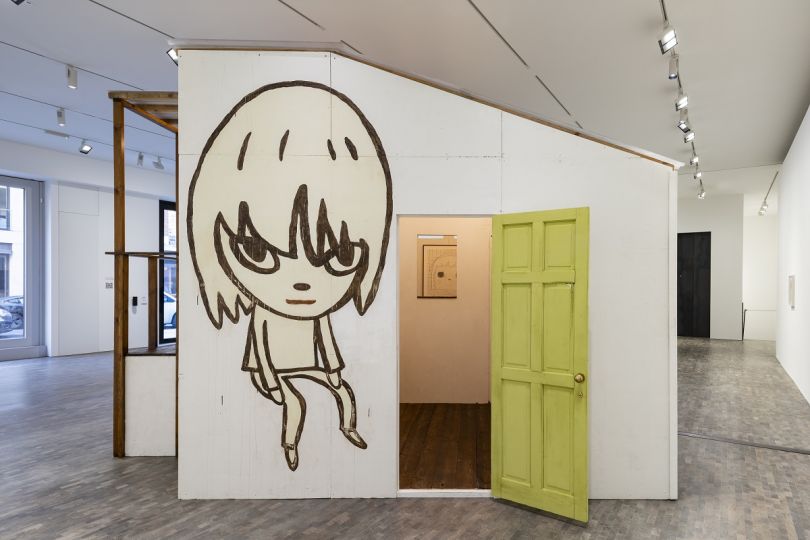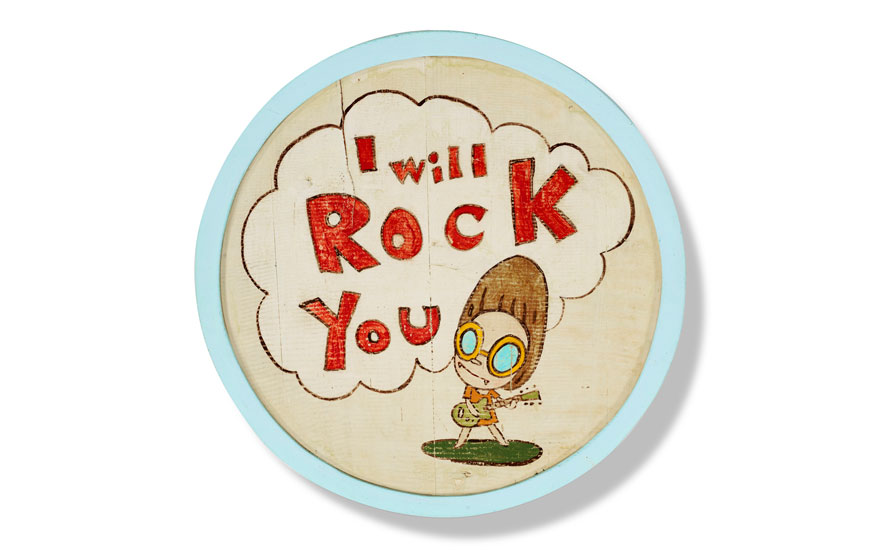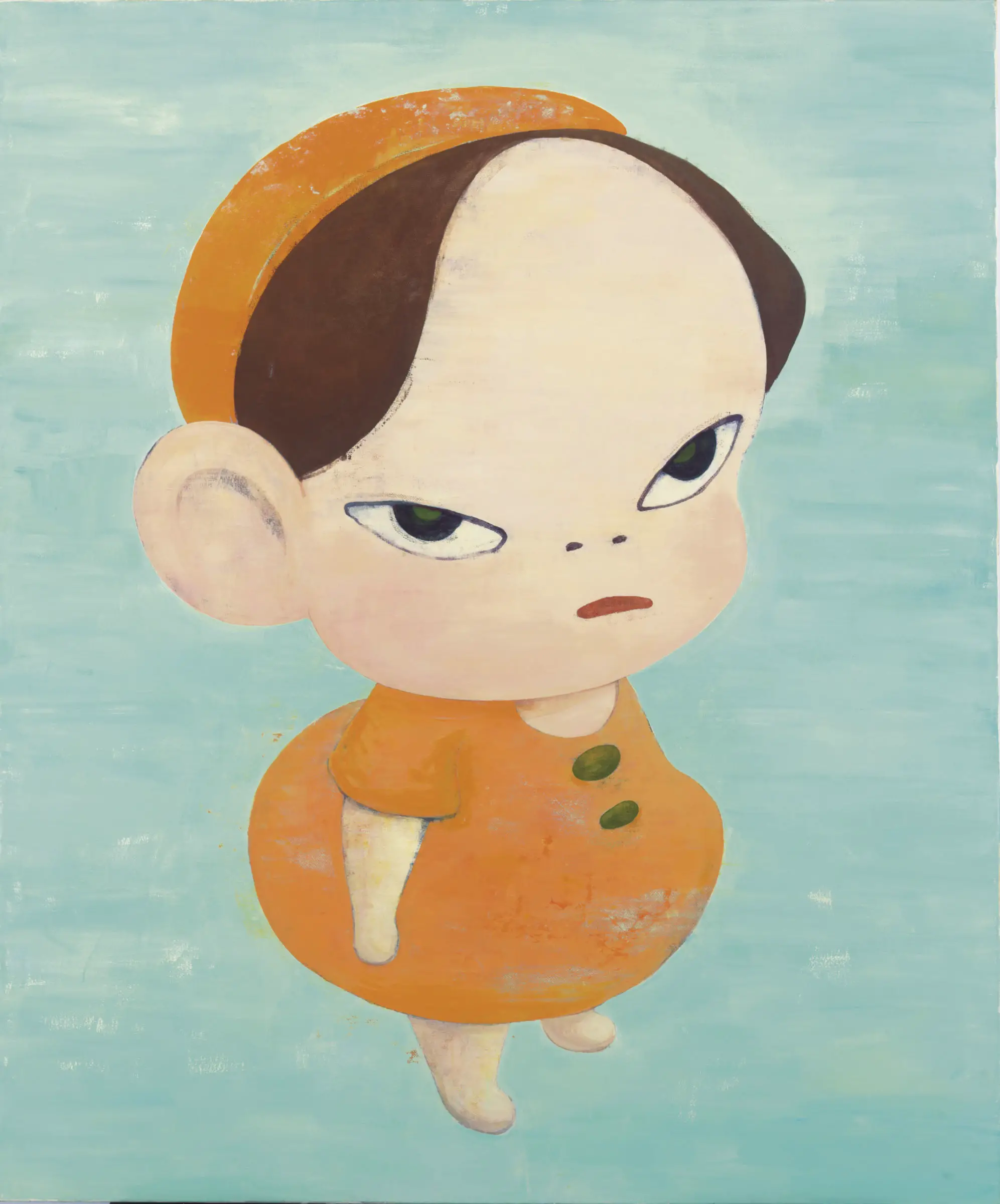There is one artist who is constantly enthralling art fans and collectors around the world today.
That is Yoshitomo Nara.
In this issue, we have collected nine surprising truths about Yoshitomo Nara.
1) The story behind the birth of the big-eyed child

Since his early days, Yoshitomo Nara's works have been mainly illustrations in the form of familiar figures of children.
In fact, when the artist visited Hong Kong in the 1980s, he met a little girl with big eyes and a high forehead and was inspired by her.
Also, everyone always thinks that the main character in the painting is a girl, but in fact, the artist himself did not set a gender, so it would be more appropriate to describe her as neutral.
Because of his cartoonish and cartoon-like style, Yoshitomo Nara is often compared to another master artist, Keith Haring, but it can be said that Yoshitomo Nara's uniqueness emerges from his successful use of Japanese "kawaii" culture.
(2) Most Expensive Japanese Artist

In 2019, Yoshitomo Nara was the center of attention at the auction house, breaking the record twice in a six-hour period.
Among them was the gigantic work "Knife Hidden in the Back" (234 x 208 cm), the largest canvas work by him in the auction's history.
It was sold at Sotheby's for a high price of NT$760 million, surpassing Kusama's all at once.
The girl in the painting has a melancholy expression on her face, and it is tempting to fantasize that she may be hiding a deadly knife behind her pretty appearance.
Super Flat

Superflat" is an art movement that originated in Japan and was proposed by Takashi Murakami.
Using bright colors, patterns, and Japanese manga symbols, the theme is often contemporary overconsumption culture.
Although not an official group, Yoshitomo Nara is often considered a member of "Superflat" because of similar elements when introduced outside of Japan.
4) Punk Music

It may not be hard to imagine that much of Yoshitomo Nara's work is influenced by the strong rhythms of punk music and contains a spirit of rebellion and resistance.
Another characteristic of Yoshitomo Nara's work is that it follows the image of the Otafuku, a traditional Japanese character.
Otafuku traditionally means joy.
Plump cheeks and cheerful eyes are standard for Otafuku.
Yoshitomo Nara has transformed Otafuku into a mischievous child.
This change brought about by Yoshitomo Nara can be interpreted as a new redefinition of traditional Japanese culture.
5) Solitude in the Dusseldorf Era

In a previous interview, Yoshitomo Nara said, "I went to Germany when I was 28 years old and chose Germany by accident.
'I ended up living in Germany for 12 years. There I became "alone" in the truest sense of the word. It brought back memories of my lonely childhood. The cold and darkness of this city (Düsseldorf) resembles my hometown (Aomori), and its atmosphere creates a strong barrier to the outside world."
This superimposition of the new place in Germany and his hometown undoubtedly had a great influence on Nara's work.
6) Relationship with Tomio Koyama

When discussing Yoshitomo Nara's success, it is impossible to ignore the presence of Tomio Koyama, the man behind the scenes.
After graduating from Tokyo University of the Arts, Tomio Koyama worked at various galleries before establishing his own gallery in 1996.
Not only does he have a precise vision and deep knowledge of the art world, but he has also collaborated with such inimitable artists as Yoshitomo Nara and Takashi Murakami, and has helped them to expand their international reach.
Today Tomio Koyama Gallery is one of the most influential galleries in Japan.
(7) 3.11

After the Great East Japan Earthquake of 311, a traumatized Yoshitomo Nara was unable to continue his activities for some time.
He said in a 2016 interview.
"Compared to other artists who were affected by the disaster, the biggest difference between me and them is that I grew up in Aomori, which is right on the border of Fukushima."
He said. Yoshitomo Nara visited the disaster area many times and returned to his alma mater, Aichi Prefectural University of Fine Arts and Music, where he lived in hopes of regaining inspiration for his paintings.
I think everyone in Japan experienced the same emotions," he said. I think everyone in Japan felt the same way. What I am doing is meaningless and useless. After all, no one needs art if you are in such an extreme situation."
However, Yoshitomo Nara was not defeated by this feeling of helplessness.
He said, "I will continue to be an artist, prepare for the future, and if my life is saved, I will create art for those in need."
He encouraged himself.
(viii) Appealing for equality and refusing to be labeled

The renowned American art critic Roberta Smith once described Yoshitomo Nara as the most "equality" oriented artist since Keith Haring.
In a 2015 interview, Yoshitomo Nara said, "People may have similar personalities because they grew up in cities. But we cannot judge them by the same standards."
He said.
While Yoshitomo Nara's most popular and important works are his drawings of children with big eyes and big heads, in fact Yoshitomo Nara has always used different media, such as sculpture and animation.
His personal life is usually low-key, and he's also said that his use of social media can hinder him from pursuing his art in its purest form.
This also contributes to Yoshitomo Nara's position as a special person in contemporary society.
(ix) Relationship with the artist Banana Yoshimoto

Banana Yoshimoto, the Japanese author made famous by "Kitchen," has collaborated with Yoshitomo Nara many times since 1999, using his photographs as the cover of her novels.
For example, "Muteki/ Doom," "The Stepmother in Argentina," and "Daisy Life" are very familiar to Taiwanese readers.
Here we can see a cross-border collaboration between the Japanese literary and artistic worlds.
Regrettably, when Banana Yoshimoto was interviewed, she said, "We may never collaborate again. ......" She was frank in her words.
We still have a good relationship," she said, "but we have already parted ways in the direction we want to go.
The Yoshitomo Nara of that time has changed, and is constantly changing into the new Yoshitomo Nara.